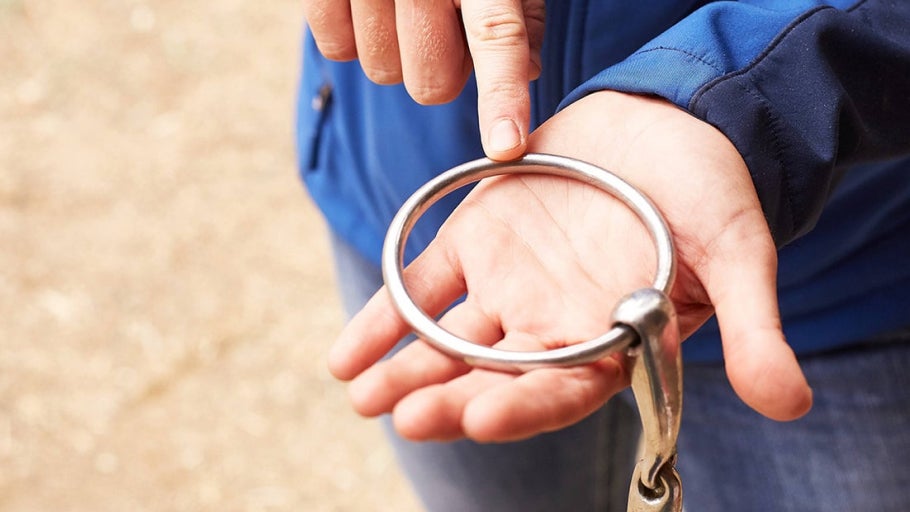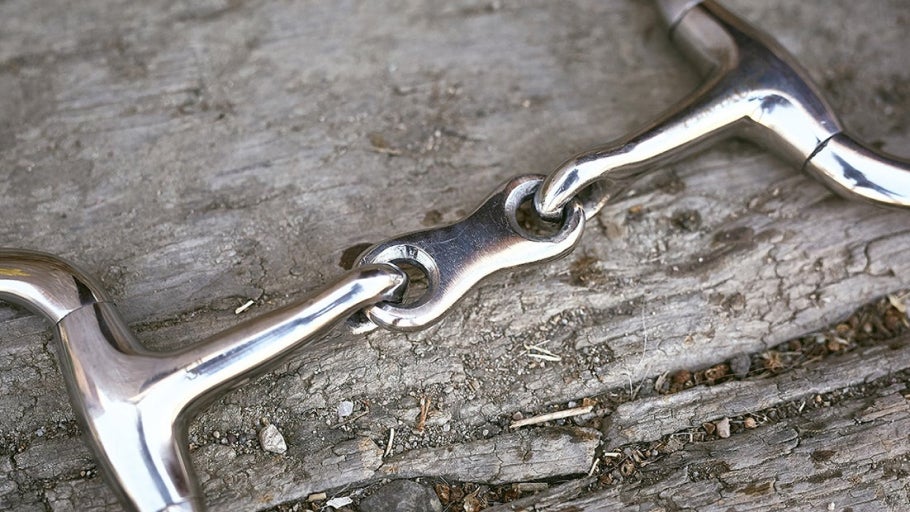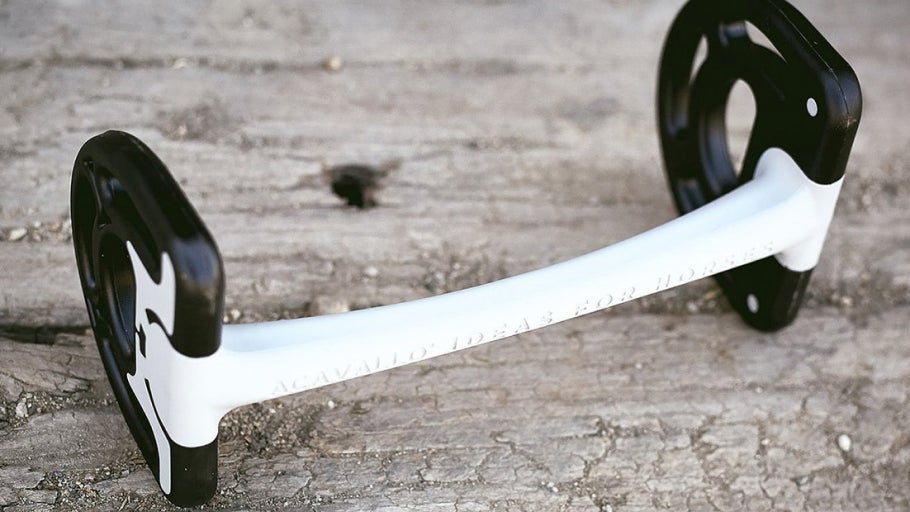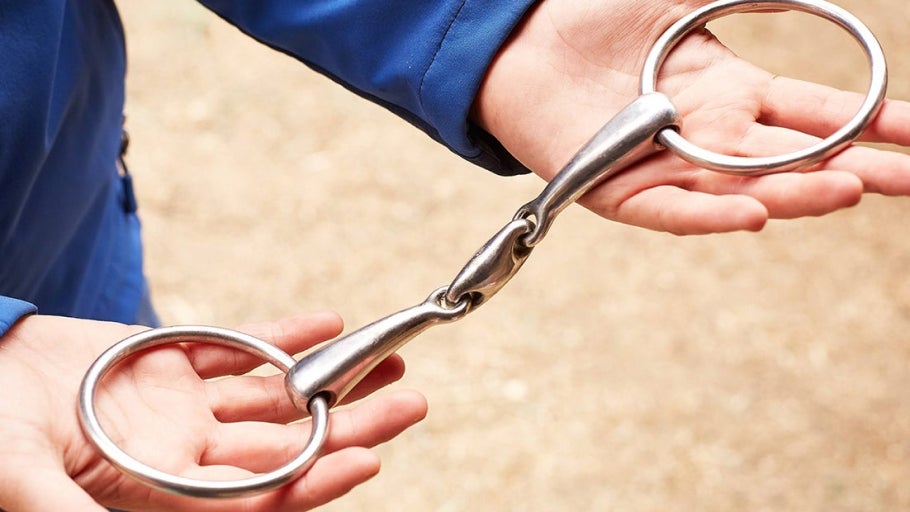
Horse Bit Parts & Mouth Anatomy Guide
Knowing the anatomy of bits and where they enact their pressure in the horse's mouth is vital when understanding bit action. Although many bits look different, they actually share similar parts. For instance, a snaffle and curb bit both have bars and cheekpieces; however, the curb bit also has a purchase and a shank to give it a different action than the snaffle bit.
In this article, we will go over the common horse bit parts and describe how they interact with horse's mouth anatomy. We will address how bit pressure affects the horse's tongue, bars, lips, palate, chin groove, and poll. To learn more, follow along with us!
Horse Bits: Common Parts Identified
A. Cheekpiece: The cheekpiece is the part of the bit you see when the bit sits in the horse's mouth. Cheekpieces can range from loose rings to shank bits, which all have different actions and levels of control. For more information, check out our cheekpiece guide.
B. Mouthpiece: Bit mouthpieces lay across the tongue, in an area of the mouth where there are no teeth. They can enact pressure on the tongue, bars, lips, and palate. There are many different types of mouthpieces on the market, each offering a varying degree of control. For more information, check out our mouthpiece guide.
C. Bars: The bars of the bit may look different, depending on whether the bit is jointed or non-jointed. A jointed mouthpiece's bars are on either side of the joint while a non-jointed mouthpiece's bar spans the entire mouthpiece. The bars are typically smooth, twisted, or have features like links or rollers.
D. Joint/Link/Bushing/Port: Some bits may have an alteration in the middle of the bit. Single-jointed bits have their "joint" right in the middle, which collapses and creates a nutcracker effect on the tongue, bar, and lips. Double-jointed bits have a center link, which reduces the nutcracker action. Bits with a bushing, also called a barrel or roller, allow for independent side movement, which is good for lateral and vertical flexion. Some bits have a "U"-shaped port at the middle, which allows some tongue relief but can cause palate pressure depending on the height of the port.
E. Purchase: The purchase is located above the mouthpiece on curb and shank bits. The length of the purchase influences the action upon the mouth. Shorter purchases will act quicker on the horse's mouth while longer purchases will take longer to act.
F. Shank: The shank is located below the mouthpiece on curb and shank bits. Shanks multiply the amount of rein pressure and come in short and long versions. Typically, the longer the shank, the more pressure that will be felt on the mouth.
G. Curb Strap/Chain: A curb strap or chain can be added to some bits such as shanks, curbs, pelhams, and kimberwicks. They attach to the purchase of the bit and sit in the horse's chin groove. When the reins are engaged, the shank or cheekpiece tightens the curb strap/chain into the chin groove, which encourages the horse to be light and soft.
Horse Mouth Anatomy
Tongue
The tongue is made up of twelve highly sensitive muscles that react to pressure, pain, taste, and heat. Its main function is to help the horse eat and swallow food. The hyoid bones that connect the back of the tongue and jaw are also connected to a group of muscles extending to the sternum, shoulder, and forelegs. These muscles extend further into the breast, pectoral, and abdominal muscles—all the way down to the pelvis. This is important to consider, because most bits utilize some level of tongue pressure, which can influence the amount of tension throughout the horse's entire body during work.
Bars
The bars of the horse are part of the interdental space, an area of the horse's mouth with no teeth. The space between the incisors and premolars is what makes it possible for a horse to hold a bit. The bars are the lower, or mandibular, part of the interdental space and extremely sensitive because they contain many nerve endings. Some bits employ bar pressure, as seen with single-jointed snaffles. Other bits wrap around the bars, as seen with wide-ported bits, to reduce bar pressure.
Lips
The horse's lips are a prehensile body part that aids them with pulling food into their mouth. Horse bits sit in the corner of the mouth and create pressure along the lips' sensitive tissue when engaged. A factor to consider when using a bit with lip pressure is that lips can move and easily be injured because of their sensitivity.
Palate
The roof of the horse's mouth is called the palate. Bits that utilize palate pressure work off of the hard palate, which separates the mouth from the nasal cavity and is responsible for aiding in the mastication of food. When a bit with palate pressure is engaged, it rotates off the tongue and into the hard palate. Correction bits, spade bits, and bits with high ports typically work off of palate pressure.
Chin Groove
The chin groove is a sensitive area between the soft lower lip and the hard upper jaw. This natural groove is where a curb strap or chain sits to work in partnership with the horse's bit. When the cheekpieces are engaged, they tighten the curb strap or chain along the chin groove—encouraging the horse to give to the pressure.
Poll
Poll muscles, or the rectus capitis muscle group, are located on each side of the horse's neck behind the ear. These muscles are anchored to three of the cervical vertebrae and span eight inches down the neck. They insert themselves into the base of the skull, which allows vertical and lateral flexion of the head. Typically, leverage bits will induce poll pressure when the shank is engaged and the mouthpiece and purchase are rotated forward. This rotation applies pressure through the cheekpieces and across the crown of the headstall or bridle, which then puts pressure on the poll.
Closing Thoughts
We hope our guide clarified any questions you may have had regarding bit parts and the anatomy of a horse's mouth, as it relates to bits! It is important to know bit terminology when navigating the options online, and we think it is imperative for equestrians to understand how a bit functions in the horse's mouth. For additional information to make a more educated bit purchase, we invite you to visit the rest of our bit buying guides! Should you have any lingering questions, please feel free to reach out to our customer service team at (800)620-9145 or info@ridingwarehouse.com for assistance. Happy bitting!
Related Articles












